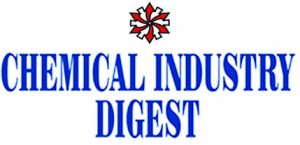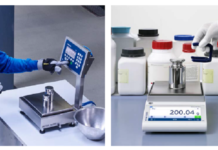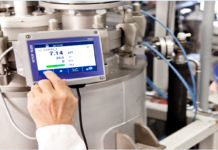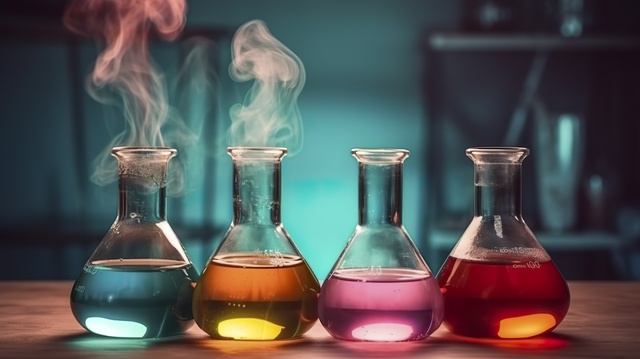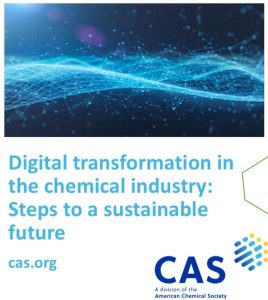Abstract
The specialty chemicals industry is evolving rapidly due to the demand for usage of sustainable technologies across all industry verticals, advancements in technology and tailored application needs. The article attempts to give the reader an overview of the specialty chemicals industry with a focus on explaining the current status, the growth drivers and the emerging scenarios.
Introduction
Specialty chemicals are materials that are designed for a specific application and are sold based on their performance or function rather than their composition. Hence, specialty chemicals are often referred to as “performance chemicals”. Specialty chemicals are either single chemicals or a mixture or formulation of various chemicals. These chemicals find applications across the value chains in many industries right from the raw material stage through the manufacturing process till the end use of the finished product.
Since specialty chemicals are used to achieve a specific performance, these chemicals are best classified based on the function performed by these chemicals. Examples of functions performed by specialty chemicals are dispersion, agglomeration, complexation, chelation, adhesion, disinfection, corrosion control etc. Now, these as well as other functions are required in diverse industries and in different environments. Hence, even though a specialty chemical product is developed for a specific function in a particular industry, there is always a possibility of developing another application in a different industry in which a similar function is required. In some cases minor modifications in the product are necessary in order to make the product perform in a different environment. A case in point is the use of surfactants in industrial, domestic as well as cosmetic industry.
In this case the same surfactant which is used for industrial application is made suitable for use in the cosmetic industry by following the regulatory requirements of maximum acceptable impurity levels or concentrations specified for use in the cosmetic industry in the country of use. If we trace the history, specialty chemicals were discovered accidentally eg. Dyes were discovered while attempting to produce quinine from coal tar. Later with advancements in chemical technology, new products were designed to achieve a certain performance in the targeted end applications. A case in point is the development of ion exchange resins which are used for the softening of hard water. From humble beginnings of softner resins, now different variants of ion exchange resins are used in multiple applications across many verticals. Similar application development has taken place for many specialty chemicals.
Industry Usage
In order to understand the diverse nature of applications of specialty chemicals, we need to explore the industries in which most of the specialty chemicals currently manufactured are used.
Some of the major application industries and the specialty chemical categories being manufactured currently are as follows:
- Adhesives such as Silicone, Polyurethane, Acrylic, Epoxy, Urea-Formaldehyde, Phenolic,
Melamine-Formaldehyde etc. - Water treatment chemicals such as polyelectrolytes, flocculants, dispersants, corrosion and scale inhibitors, biocides, ion exchange resins etc.
- Coatings such as Polyurethane, Epoxy, Alkyd, Polyester, Zinc-rich primer, Polysiloxane etc.
- Inks- Aqueous based and Solvent based
- Pharma – Active pharma ingredients (API’s) , Excipients etc.
- Cosmetic – Surfactants, Emulsifiers, Glycol esters, Benzophenones etc.
- Plastics and Polymers – Antioxidants, Hindered Amine Light Stabilizers (HALS), pigments, dispersants etc.
- Agrochemicals and pesticides
- Construction chemicals
- Textile and Leather Auxiliaries
Now, with further technological advancements in automation, data analytics and artificial intelligence, the specialty chemicals industry is set for substantial growth in the coming decades. This growth is being driven by the need for all industries to be sustainable in the future and the urgent need to protect the environment while generating value for the customer. Some of the emerging opportunities in the specialty chemicals space are based on this urgent need for sustainable manufacturing as well as the regulations being imposed by various countries across the globe.
Most of the drivers of high growth in specialty chemicals are based on “green chemistry” across many industry verticals which are listed as follows:
- Growth of Electric Vehicles and Batteries which shall trigger requirement of battery chemicals such as Lithium Nickel Manganese Cobalt Oxides which balance energy density and thermal stability. Lithium Iron Phosphate offers safety, longetivity and cost effectiveness and are popular in EV’s as well as stationary storage. Battery electrolyte and binders for improved Lithium-ion battery performance for EV and energy storage. Dielectric polymers for flexible and light weight electronic components. Lithium Nickel Cobalt Aluminium Oxide (NCA) high energy used in high performance EV’s (Tesla). In anode materials graphite (Natural and Synthetic) primary anode material with low cost and proven performance. Silicon based anodes which are emerging materials with higher capacity than graphite but challenging due to volume expansion. Electrolytes such as Lithium Hexafluorophosphate (LiPF6) which is the most common salt in liquid electrolytes. Fluorinated compounds used as electrolyte additives for improved thermal stability. Solid state electrolytes such as Sulfides, oxides and polymers used in solid state batteries for safety and energy density.
- Semiconductor manufacturing which shall require Photolithography chemicals, cleaning and etching chemicals and dopants. High purity chemicals for semiconductor essential for advanced microchips and display.
- Biodegradable polymers based on renewable sources such as Polylactic acid.These polymers are suitable for the materials currently used in the packaging and the textile industry.
- Bio-based agrochemicals demand is set to rise for products such as pesticides, herbicides and fertilizers. This is triggered by the push for sustainable agriculture by consumers as well as the government. Precision agri solutions using specialty fertilizers and adjuvants tailored to specific soil and crop needs.Biopesticides and biostimulants derived from natural sources to reduce chemical impact on the environment. Controlled release technologies for efficient nutrient delivery and minimized waste.
- Nanotechnology based material for application in electronics, energy storage and medicine. Nanotechnology is helping design and develop advanced materials with unique molecular structures. Growth of graphene, quantum dots and other nanomaterials is expected to lead to substantial changes and growth in use of newer materials. Incorporation of nanoparticles to enhance the functionality of products such as Ultra Violet (UV) blocking in cosmetics or improved thermal stability.
- Paints and Coatings: Oil based “alkyd” paints give off large amounts of volatile organic compounds (VOC`s). Thesevolatile compounds evaporate from the paint as it dries and cures and may have one or more impacts. The need to lower the environmental impact of solvents is leading the way to the development of safer, nontoxic and low emission solvents. Self healing coatings is another emerging innovation. New coating materials are being developed which can repair themselves when damaged enhancing product life and reducing the cost of maintenence. Another emerging area is the development of antimicrobial coatings which can be used in the healthcare industry and public spaces for reducing the spread of bacteria and viruses. The need for thermal barrier coatings for use in aerospace as well as industrial equipment to withstand extreme temperatures is also set to grow substantially driving development of newer materials. Emergence of new generation antifouling coatings used in marine applications to prevent organism build up.
- Polymer science: Development of materials that change properties such as colour, shape or conductivity in response to stimuli liketemperature, pH or light. Flame retardants which are halogen free options for use in the electronics as well as construction industry. New materials for encapsulation for solar panels to protect the panels as well as improve their efficiency. Polymer composites for manufacturing light weight wind turbine blades.
- Cosmetics: Skin microbiome friendly ingredients which are specialty chemicals designed for the support of the skin health by preserving the natural microbiome.Bio-Surfactants derived from oils orsugarsfor use in the manufacture of personal care and detergents.
- Pharmaceuticals and Neutraceuticals: Natural preservatives which are alternatives to synthetic preservatives for clean label products. Emergence of new encapsulation technologies for controlled release ofthe active ingredients which enhance the efficacy, bioavailability and stability. High purity excipients for improved drug delivery as well as performance. Specialized API manufacturing for development of complex active pharma ingredients for advanced therapeutics. Lipid nanoparticles for mRNA based vaccines and therapeutics.
- Water treatment chemicals: Advanced membrane technologies for more efficient filtration and desalination. Antifouling agents for preventing biofilm and scale formation in industrial water systems. Ecofriendly coagulants and flocculants for improved waste water treatment and minimal environmental impact. Per fluorooctanoic acid (PFOA) and Per and polyfluoroalkyl substances (PFAS) removal from drinking water is emerging as a major problem in many countries. Various technologies using specialty chemicals including ion exchange resins and specialty membranes are being evaluated for these new and emerging requirements in water treatment.
- Catalysis – Catalytic reactions can reduce waste and the use of hazardous reagents. Innovative synthesis methods using biocatalysts such as enzymes to catalyse chemical reactions are a greener alternative to traditional methods of chemical synthesis. New generation heterogeneous catalysts based on ion exchange resin technology shall replace homogeneous catalysts such as sulphuric acid and poly tetra sulphonic acid (PTSA) in many acid catalysed reactions such as esterification, etherification etc. Bioenzymes for facilitating highly specific reactions in pharma and fine chemicals is another growth area.
- Carbon Dioxide Utilization: Conversion of captured carbon dioxide into valuable specialty chemicals such as polyols and surfactants
- High performance lubricants and greases: Nanolubricants in corporating nanoparticles to enhance the lubricating properties which can also reduce friction and wear. New generation biodegradable lubricantswhich are environmentally friendly alternatives to traditional petroleum based lubricants.
- Regulatory requirements as per the US Toxic Substances Control Act (TSCA) and the REACH (Registration, Evaluation, Authorisation and Restriction of Chemical Substances) legislation and these requirements are compelling companiesto use safer materials and processes. These regulations are also compelling a shift from use of toxic, high-emission and pollutant active substances to green chemistry.
Conclusion
The specialty chemicals sector is thus rapidly evolvingand leveraging cross disciplinary innovation and sustainable practices to meet global demands while reducing the environmental footprint. In conclusion we can see that specialty chemicals are products which are currently being used in various industries. Now, with the emerging requirements as well as various regulatory requirements, new technologies based on artificial intelligence the specialty chemicals industry is slated for rapid growth in the coming decade.
